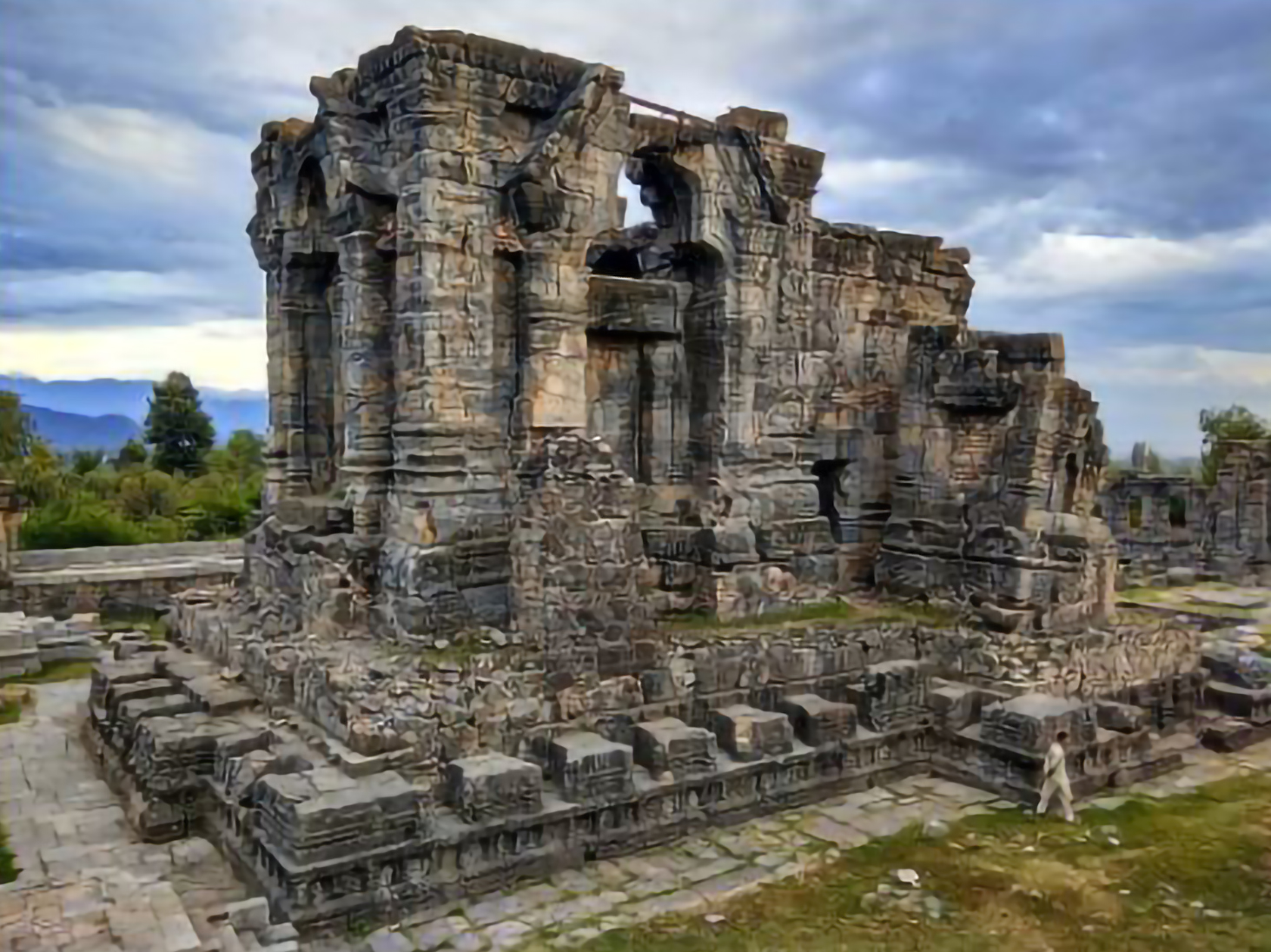Indian Heritage & Culture
Martand Sun temple
- 10 May 2022
- 5 min read
For Prelims: Site of National Importance, Karkota Dynasty.
For Mains: Lalitaditya Muktapida, Martand Sun Temple.
Why in News?
The Jammu and Kashmir Lieutenant Governor participated in a religious ceremony held in the ruins of the 8th century Martand Sun temple, a protected monument under the Archaeological Survey of India. This temple has been recognised as a “Site of national importance”.
What is the Martand Sun Temple?
- The Martand Sun Temple also known as Pandou Laidan is a Hindu temple dedicated to Surya (the chief solar deity in Hinduism) and built during the 8th century CE. Martand is another Sanskrit synonym for Surya.
- It was built by the third ruler of the Karkota Dynasty, Lalitaditya Muktapida.
- It is now in ruins, as it was destroyed by the orders of Muslim ruler Sikandar Shah Miri.
- The temple is located five miles from Anantnag in the Indian union territory of Jammu and Kashmir.
- From the ruins and related archaeological findings, it can be said it was an excellent specimen of Kashmiri architecture, which had blended the Gandharan, Gupta and Chinese forms of architecture.
- The temple appears in the list of centrally protected monuments as Kartanda (Sun Temple).
Who was Lalitaditya Muktapida?
- Lalitaditya was born in the year of 699 AD as the third son of Durlabhak-Pratapaditya of kashmir.
- He was from the Nagvanshi Karkota Kayastha Dynasty of Kashmir.
- Karkota Kayastha families were mainly serving in the army of the kings of Kashmir since decades. They were known for their remarkable courage in the battlefield.
- The Kings of Kashmir had given them the title Sakhasena for their immense contribution.
- Lalitaditya’s birth name was Muktapida and his older brothers were Chandrapida and Tarapida.
- Muktapida took over the Kingdom of Kashmir in the year 724 AD.
- It was the same time, when the western invasion had begun in India and the Arabs had already occupied the province of swat, multan, peshawar and the Kingdom of Sindh.
- The Arab king Mohammad Bin Qasim, the Arab ruler was already threatening to occupy Kashmir and central India.
- He fought the daradas, kabhojas and bhuttas of ladakh who were under Tibetan rule.
- Lalitaditya himself led the army into the war defeating all Kings and established control over the regions of Ladakh.
- The alliance between Lalitaditya and Yashovarman defeated the Arabs from entering Kashmir.
- He later invaded Turkestan via Kabul. Lalitaditya acquired most of the places in the west and south of India starting from Rashtrakutas in Maharashtra, Pallavas and Kalinga in the southern part.
- He also extended his kingdom to central China after defeating the Chinese. After which he was compared with Alexander the great.
- The Kashmir Kingdom gained enormous wealth and Lalitaditya utilized the wealth to build massive infrastructure in Kashmir, construction of temples were taken up and Kashmir saw extensive development under Lalitaditya.
- Lalitaditya was a very liberal King, though he was a strong follower of Hindu tradition, he respected all religions. He is said to be a very compassionate ruler who responded to people’s voices.
- In the year 760 AD, the Lalitaditya era came to an end by his sudden death.
What are the Key Points of the Karkota Dynasty?
- The Karkota dynasty established their power in Kashmir (early 7th century) and it emerged as a power in central Asia and northern India.
- Durlabh Vardhana was the founder of the Karkota dynasty.
- The Karkota rulers were Hindus and built spectacular Hindu temples at Parihaspur (capital).
- They also patronised Buddhism as some stupas, chaityas and viharas have been found in the ruins of their capital.





